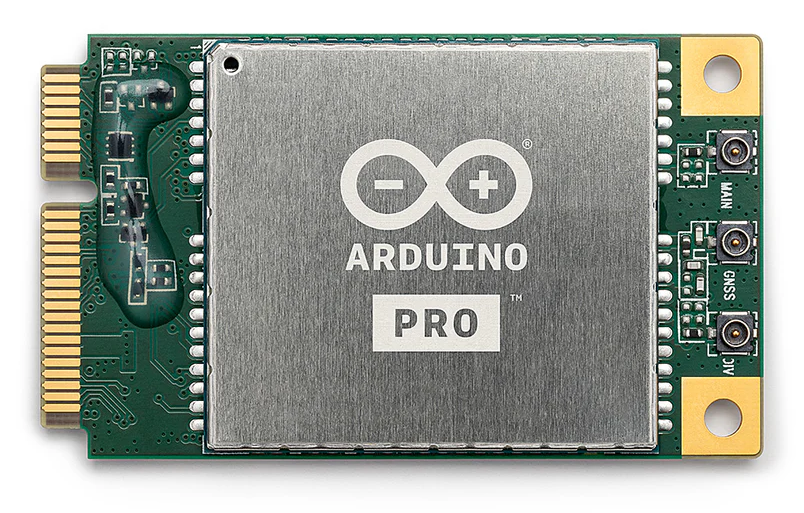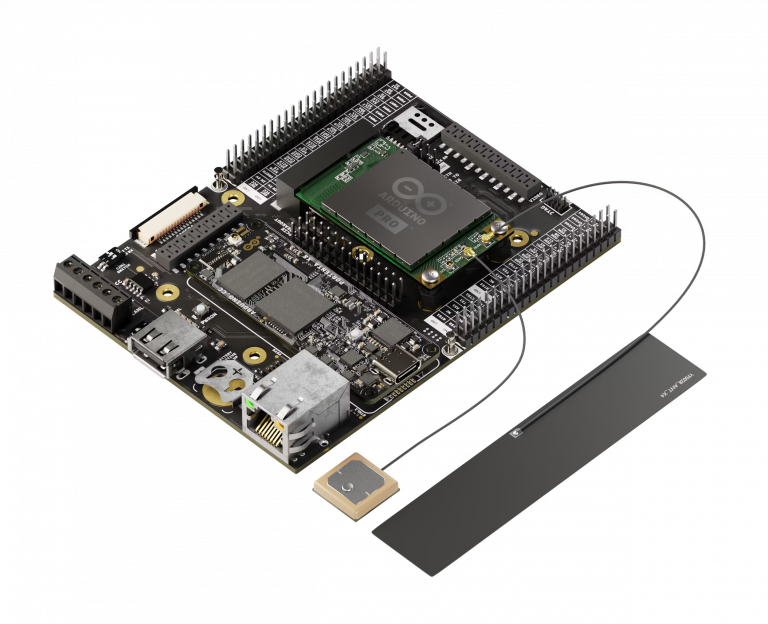Arduino’s Portenta Mid Carrier presents engineers with another way to gain easy access to the many interfaces afforded to them by Arduino’s industrial-grade Portenta MCU and Processor boards. Each Portenta board can dock with the Mid Carrier via the high-density connectors that characterise the Portenta series for fastest prototyping and system integration, particularly in IoT applications.
You can learn about each of these boards on ipXchange’s overview page for Arduino’s PRO line of products.
The industrial-grade Portenta Mid Carrier measures in at 114 x 86.5 mm and is specified for operation in temperatures from -40°C to +85°C. The assembled system can be powered via either the onboard screw terminal block, the USB-C connector on the Portenta board itself, or via the 5-V headers. Additional CAN, SAI (Serial Audio Interface), I2S, PDM, and GPIO interfaces can also be accessed via these headers.
The main breakout connectors and headers for the Portenta Mid Carrier are as follows:
- 1x USB-A female connector
- 1x Gigabit ethernet connector (RJ45)
- 2x CAN, 1x with and 1x without onboard transceiver
- 1x mPCIe connector (compatible with Arduino’s new 4G modules)
- 1x MIPI camera connector
- 1x Arducam camera connector
- 1x MicroSD card slot
- 1x RTC LiPo battery slot
- 1x Giga Display Shield connector
Discover the full specifications of this new addition to the Portenta family in this official datasheet.

As shown in the main picture, Arduino’s Portenta Mid Carrier also enables seamless integration of Arduino’s new 4G modules to expand your IoT design with cellular connectivity. These are available in a mini PCIe form factor and come in two variants: Global with GNSS, and EMEA without GNSS.
Arduino’s 4G modules support long-range indoor and outdoor LTE CAT4 4G connectivity with fallback to 2G/3G networks for guaranteed service. The Global module supports GPS, GLONASS, BeiDou, Galileo, and QZSS GNSS constellations for remote locationing wherever your application ends up.
Arduino’s 4G modules support device monitoring and management using Arduino Cloud, with the ability to send SMS alerts if desired. You can learn more about both modules in this datasheet, but if you’re building a cellular IoT project, or simply like the features of the Portenta Mid Carrier, fill out the form below, and ipXchange will get you connected with Arduino for evaluation of this technology with your choice of Portenta.
(Images sourced from Arduino)

